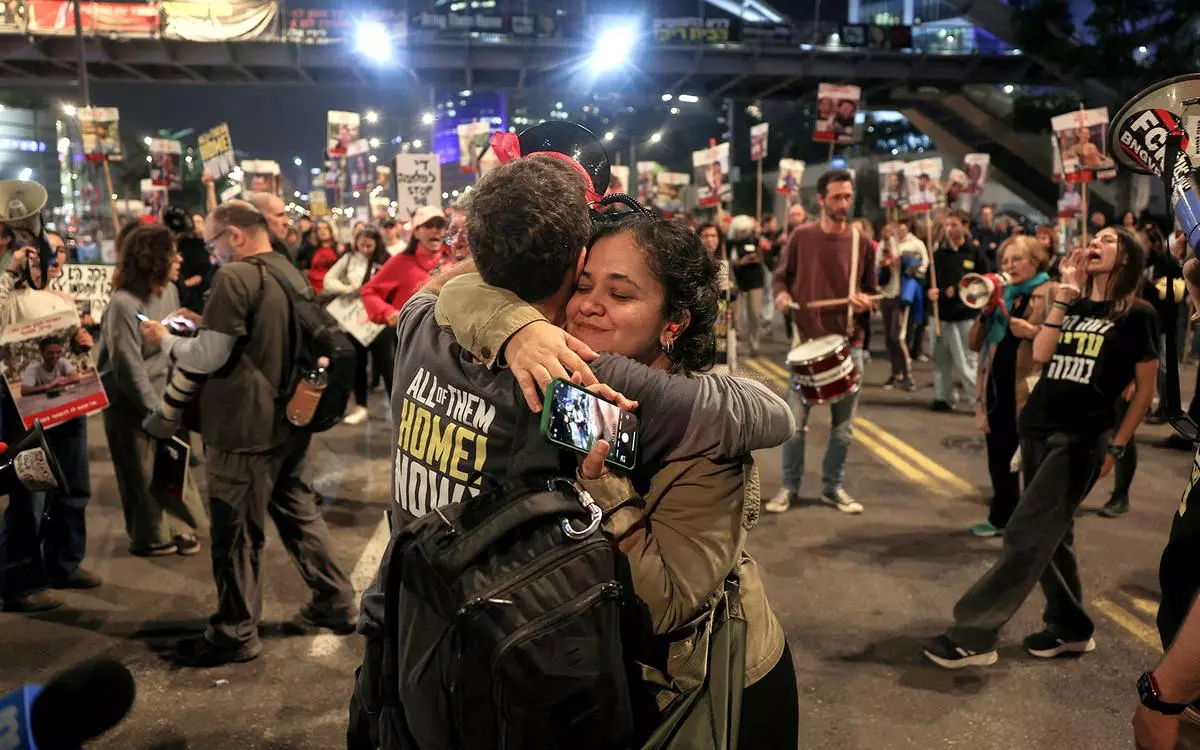After sixteen months of relentless conflict and destruction, a six-week, three-phase truce brokered by Egypt, Qatar, and the United States is set to take effect. This agreement, which promises the release of Israeli hostages and immediate humanitarian aid for Palestinians, offers a glimmer of hope amid the devastation. Yet, the truce is fragile, not a resolution, and will require continued vigilance and negotiation.
The ceasefire represents a tenuous pause in hostilities rather than a cessation of conflict. It hinges on sustained monitoring and accountability from all parties, particularly the U.S., which will play a crucial role under the incoming Trump administration. While the agreement outlines steps for reconstruction and governance in Gaza, it glaringly omits any substantive roadmap for Palestinian political aspirations. Without a peace process championed by a significant Israeli constituency, the prospects for a lasting resolution remain bleak.
Within Israel’s coalition government, opinions on the ceasefire are divided. Some view it as a necessary compromise, while others see it as a capitulation. Israel’s ambassador to India, in a diplomatic yet candid interview, acknowledged the complexities of balancing military action with the larger national interest. The deaths of six hostages during military operations underscore the costs of unrestrained force. Moreover, the ambassador admitted that Israel’s geopolitical challenges—surrounded by radical elements—necessitate measured actions.
The ceasefire also highlights evolving U.S.-Israel relations. While ties remained cordial under President Biden, the two governments were often at odds on this conflict. In contrast, Netanyahu and President-elect Trump share a closer alignment. Trump’s firm warnings against Hamas may have influenced their agreement to the truce. However, his skepticism about the ceasefire’s durability reflects broader concerns about the agreement’s viability. Trump’s cancellation of Biden-era sanctions against far-right Israeli settlers further illustrates the sharp shift in U.S. policy under his administration.

For Palestinians, the ceasefire presents an opportunity to address long-standing governance issues. The Palestinian Authority must demonstrate transparent and effective leadership to regain credibility. Simultaneously, expansionist Israeli settlement activities in the West Bank threaten to undermine efforts for a two-state solution. Arab states must maintain pressure and offer incentives for Israeli regional integration and Palestinian statehood, keeping the door open for a political settlement.
The ceasefire’s sustainability remains uncertain. Critics argue that Netanyahu’s political survival depends on prolonging the conflict to deflect attention from his domestic challenges. Far-right members of his government have threatened to resign over the agreement, further destabilizing his administration.
From the Palestinian perspective, lawyer and negotiator Diana Buttu warns that U.S. policies, including continued arms sales to Israel, could determine the truce’s fate. During the latest conflict, U.S. military aid to Israel exceeded $12 billion, fuelling calls to reevaluate such support given the humanitarian toll in Gaza.
As the ceasefire takes hold, the international community faces a critical juncture. The U.S. must leverage its influence to ensure compliance and progress toward a broader peace agreement. At the same time, Palestinians must seize this moment to reform their institutions and advocate for statehood. Without a concerted effort to address underlying grievances and power imbalances, this fragile truce may unravel, plunging the region back into violence.
In this high-stakes environment, Trump’s foreign policy approach will be closely watched. His administration’s actions could either stabilize the ceasefire or exacerbate tensions, with implications extending far beyond the Middle East. For now, the world holds its breath, hoping this pause can pave the way for enduring peace.






